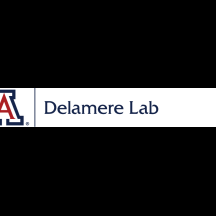| Title | Signaling Between TRPV1/TRPV4 and Intracellular Hydrostatic Pressure in the Mouse Lens. |
| Publication Type | Journal Article |
| Year of Publication | 2020 |
| Authors | Delamere NA, Shahidullah M, Mathias RT, Gao J, Sun X, Sellitto C, White TW |
| Journal | Invest Ophthalmol Vis Sci |
| Volume | 61 |
| Issue | 6 |
| Pagination | 58 |
| Date Published | 2020 Jun 03 |
| ISSN | 1552-5783 |
| Keywords | Animals, Cell Membrane, Female, Intracellular Fluid, Lens, Crystalline, Mice, Mice, Inbred C57BL, Mice, Knockout, Models, Animal, Pressure, Signal Transduction, TRPV Cation Channels |
| Abstract | PURPOSE: The lens uses feedback to maintain zero pressure in its surface cells. Positive pressures are detected by transient receptor potential vanilloid (TRPV4), which initiates a cascade that reduces surface cell osmolarity. The first step is opening of gap junction hemichannels. One purpose of the current study was to identify the connexin(s) in the hemichannels. Negative pressures are detected by TRPV1, which initiates a cascade that increases surface osmolarity. The increase in osmolarity was initially reported to be through inhibition of Na/K ATPase activity, but a recent study reported it was through stimulation of Na/K/2Cl (NKCC) cotransport. A second purpose of this study was to reconcile these two reports. METHODS: Intracellular hydrostatic pressures were measured using a microelectrode/manometer system. Lenses from TRPV1 or Cx50 null mice were studied. Specific inhibitors of Cx50 gap junction channels, NKCC, and Akt were used. RESULTS: Either knockout of Cx50 or blockade of Cx50 channels completely eliminated the response to positive surface pressures. Knockout of Cx50 also caused a positive drift in surface pressure. The short-term (∼20-minute) response to negative surface pressures was eliminated by blockade of NKCC, but a long-term (∼4-hour) response restored pressure to zero. Both short- and long-term responses were eliminated by knockout of TRPV1 or inhibition of Akt. CONCLUSIONS: Hemichannels made from Cx50 are required for the response to positive surface pressures. Negative surface pressures first activate NKCC, but a backup system is inhibition of Na/K ATPase activity. Both responses are initiated by TRPV1 and go through PI3K/Akt before branching. |
| DOI | 10.1167/iovs.61.6.58 |
| Alternate Journal | Invest Ophthalmol Vis Sci |
| PubMed ID | 32598448 |
| PubMed Central ID | PMC7415899 |
| Grant List | R01 EY009532 / EY / NEI NIH HHS / United States R01 EY013163 / EY / NEI NIH HHS / United States R01 EY026911 / EY / NEI NIH HHS / United States |

